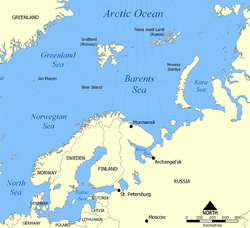
The Barents Sea is a marginal sea of the Arctic Ocean, located off the northern coasts of Norway and Russia and divided between Norwegian and Russian territorial waters. Known among Russians in the Middle Ages as the Murman Sea, the current name of the sea is after the historical Dutch navigator Willem Barentsz.
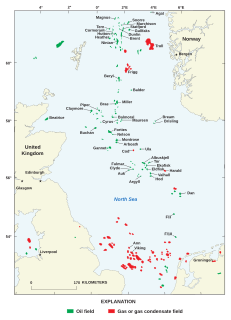
North Sea oil is a mixture of hydrocarbons, comprising liquid petroleum and natural gas, produced from petroleum reservoirs beneath the North Sea.

Snøhvit(English: Snow White) is the name of a natural gas field in the Norwegian Sea, situated 140 kilometres (87 mi) northwest of Hammerfest, Norway. The northern part of the Norwegian Sea is often described as the Barents Sea by offshore petroleum companies. Snøhvit is also the name of a development of Snøhvit and the two neighbouring natural gas fields Albatross and Askeladden. Estimated recoverable reserves are 193 billion cubic metres of natural gas, 113 million barrels of condensate, and 5.1 million tonnes of natural gas liquids (NGL). The development comprises 21 wells. The Snøhvit development is operated by Equinor on behalf of six gas companies owning licenses:
The Shtokman field, one of the world's largest natural gas fields, lies in the northwestern part of the South Barents Basin in the Russian sector of the Barents Sea, 600 kilometres (370 mi) north of Kola Peninsula. Its reserves are estimated at 3.8 trillion cubic metres of natural gas and more than 37 million tons of gas condensate.

Ekofisk is an oil field in block 2/4 of the Norwegian sector of the North Sea about 320 km (200 mi) southwest of Stavanger. Discovered in 1969 by Phillips Petroleum Company, it remains one of the most important oil fields in the North Sea. This was the first discovery of oil after the drilling of over 200 exploration wells in the North Sea "triggered" by the Groningen gas field discovery. In 1971, Phillips started producing directly to tankers from four subsea wells. Oil production is planned to continue until at least 2050.

The Statfjord oil field is a large oil and gas field covering 580 km2 in the U.K.-Norwegian boundary of the North Sea at a water depth of 145 m, discovered in 1974 by Mobil and since 1987 operated by Equinor.

Gullfaks is an oil and gas field in the Norwegian sector of the North Sea operated by Equinor. It was discovered in 1978, in block 34/10, at a water depth of 130-230 meters. The initial recoverable reserve is 2.1 billion barrels, and the remaining recoverable reserve in 2004 is 234 million barrels. This oil field reached peak production in 2001 at 180,000 barrels per day (29,000 m3/d). It has satellite fields Gullfaks South, Rimfaks, Skinfaks and Gullveig.
Oseberg is an offshore oil field with a gas cap in the North Sea located 140 km (87 mi) northwest of the city of Bergen on the southwestern coast of Norway. The field, which is 25 km long by 7 km wide, was discovered in 1979 and its development is known to be one of the significant milestones in emergence of Norway's independent oil and gas industry. The Oseberg field was named after Oseberg ship, one of Norway's most significant archeological discoveries. The ancient Viking ship from the early 9th century was discovered in a 1904 historical excavation of a burial mound at the Oseberg Farm, south of Oslo.

Troll is a natural gas and oil field in the Norwegian sector of the North Sea, one of the biggest in the North Sea, holding 40% of Norway’s gas – it also possesses significant quantities of oil, in thin zones under the gas cap, to the west of the field. The field as a whole consists of the main Troll East and Troll West structures in blocks 31/2, 31/3, 31/5 and 31/6, about 65 kilometres (40 mi) west of Kollsnes, near Bergen. Most of the gas lies in Troll East.

The Heidrun oil field is an oil and gas field discovered in 1985 in the Norwegian sector of the Norwegian Sea, named after the goat Heiðrún from Norse mythology.
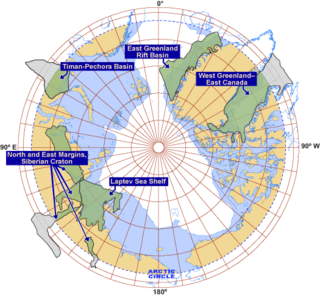
The exploration of the Arctic for petroleum is considered to be quite technically challenging. However, recent technological developments, as well as relatively high oil prices, have allowed for exploration. As a result, the region has received significant interest from the petroleum industry.

Lundin Energy is an independent oil and gas exploration and production company formed from Lundin Oil in 2001 and based in Sweden with focus on operations in Norway. It is listed on the Stockholm Stock Exchange.
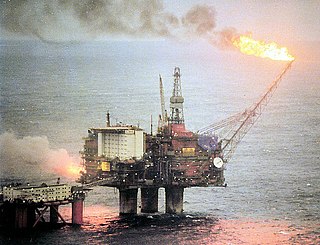
Norway is a large energy producer, and one of the world's largest exporters of oil. Most of the electricity in the country is produced by hydroelectricity. Norway is one of the leading countries in the electrification of its transport sector, with the largest fleet of electric vehicles per capita in the world.

Equinor ASA is a Norwegian state-owned multinational energy company headquartered in Stavanger. It is primarily a petroleum company, operating in 36 countries with additional investments in renewable energy. In the 2020 Forbes Global 2000, Equinor was ranked as the 169th-largest public company in the world. As of 2021, the company has 21,126 employees.
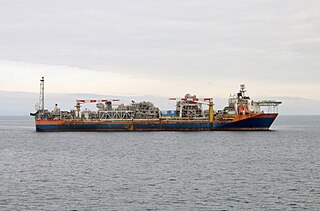
Norne is an oil field located around 80 kilometres (50 mi) north of the Heidrun oil field in the Norwegian Sea. The sea depth in the area is 380 metres (1,250 ft). Norne lies in a licence which was awarded in 1986, and embraces blocks 6608/10 and 6608/11. The Alve field nearby started to produce in March 2009 and is commingling into Norne. The Urd field is also comingling with the Norne. 6507/3-1 Alve will be tied to Norne for processing and transport. Natural gas has also been exported from Norne since 2001. It travels through the Norne Gas Export Pipeline and the Åsgard Transport trunkline via Kårstø north of Stavanger to continental Europe.
Safaniya Oil Field, operated and owned by Saudi Aramco, is the largest offshore oil field in the world. It is located about 265 kilometres (165 mi) north of the company headquarters in Dhahran on the coast of the Persian Gulf, Saudi Arabia. Measuring 50 by 15 kilometres, the field has a producing capability of more than 1.2 million barrels per day.

The West Siberian petroleum basin is the largest hydrocarbon basin in the world covering an area of about 2.2 million km², and is also the largest oil and gas producing region in Russia.

Rex International Holding is an oil and gas company headquartered in Singapore. The company's main activity is in offshore oil and gas exploration and production in assets located in Oman and Norway.

The Murchison oil field is located in the northern North Sea in the East Shetland Basin on the UK Continental Shelf. The field is situated 150 km north-east of Shetland and straddles the UK/Norwegian median line. It lies in UK Block 211/19 and extends into Norwegian Block 33/9. The field is named after the Scottish geologist Sir Roderick Impey Murchison (1792–1871). Recoverable reserves were estimated to be 340 million barrels of oil out of a total oil-in-place of 790 million barrels. The field was developed through a large steel jacket platform standing in 156 m of water. The peak production rate was 150,383 barrels of oil per day in December 1982. Oil production was supported by gas and water injection. Production ceased in 2014 and the platform was removed in 2017.
